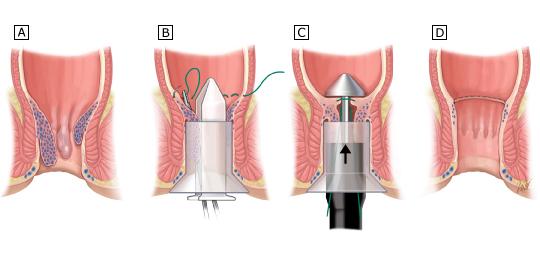Understanding Stapled Hemorrhoidectomy (Piles): A Minimally Invasive Surgical Procedure
Understanding the Benefits, Procedure, and Recovery of Stapled Hemorrhoidectomy
Introduction:
Stapled hemorrhoidectomy, also known as stapled anopexy or procedure for prolapse and hemorrhoids (PPH), is a surgical technique commonly used to treat hemorrhoids, also referred to as piles. This minimally invasive procedure offers several advantages over traditional hemorrhoidectomy, such as reduced pain and faster recovery time. In this article, we will delve into the benefits, procedure, and recovery process of stapled hemorrhoidectomy.
Benefits of Stapled Hemorrhoidectomy:
Stapled hemorrhoidectomy offers numerous benefits for patients suffering from piles. Compared to conventional open hemorrhoidectomy, the advantages of stapled hemorrhoidectomy include:
Reduced pain: Stapled hemorrhoidectomy causes less postoperative pain compared to traditional surgery, resulting in a more comfortable recovery period for patients.
Faster recovery: The minimally invasive nature of stapled hemorrhoidectomy generally leads to a quicker recovery compared to conventional procedures, allowing patients to resume their normal activities sooner.
Reduced bleeding: This procedure minimizes bleeding during and after surgery, resulting in less blood loss and a lower risk of complications.
Procedure:
During a stapled hemorrhoidectomy, the surgeon uses a specialized circular stapler device to remove excessive hemorrhoid tissue and restore the anatomical position of the hemorrhoidal cushions. The procedure involves the following steps:
Positioning: The patient is placed under general anesthesia, and the surgeon positions the patient in a suitable position for the procedure.
Accessing the hemorrhoids: The surgeon inserts a proctoscope into the anal canal to visualize the hemorrhoids and identify their location and size.
Stapling: Using the circular stapler device, the surgeon removes a circular section of the excessive hemorrhoidal tissue while simultaneously stapling the remaining tissue back into its normal position. This restores the blood flow and reduces prolapse.
Closure: The stapler creates a circular staple line that seals the remaining tissue, preventing bleeding and promoting healing.
 Recovery:
Recovery:
Following a stapled hemorrhoidectomy, patients can typically expect a relatively smooth recovery process. Here are some key aspects of the recovery:
Hospital stay: Most patients can expect to stay in the hospital for a day or less following the procedure.
Pain management: Pain medication is prescribed to manage any discomfort experienced during the recovery period.
Dietary adjustments: A high-fiber diet and increased fluid intake help prevent constipation and promote healing.
Physical activity: Patients are encouraged to engage in light physical activities, such as walking, to aid in the recovery process.
Follow-up appointments: Regular follow-up appointments with the surgeon are important to monitor progress and address any concerns.
What is the success rate of Stapled Haemorrhoidectomy (Piles) ?
The success rate of stapled hemorrhoidectomy for the treatment of piles is generally high, ranging from 90% to 98%. However, individual success rates may vary depending on the severity of the hemorrhoids, patient factors, and the surgeon's expertise.
Is stapled hemorrhoidectomy painful?
Stapled hemorrhoidectomy typically causes less postoperative pain compared to traditional surgery, leading to a more comfortable recovery period for patients.
How long does the recovery process take after stapled hemorrhoidectomy?
The recovery time for stapled hemorrhoidectomy is generally shorter compared to conventional procedures, allowing patients to resume their normal activities within a few weeks.
What are the potential risks and complications associated with stapled hemorrhoidectomy?
Although rare, potential risks include bleeding, infection, urinary retention, and recurrence of hemorrhoids. It is important to discuss these risks with your surgeon before the procedure.
Can stapled hemorrhoidectomy be performed as an outpatient procedure?
Yes, stapled hemorrhoidectomy can often be performed as an outpatient procedure, allowing patients to return home on the same day as the surgery.
Will stapled hemorrhoidectomy completely eliminate hemorrhoids?
Stapled hemorrhoidectomy aims to remove excessive hemorrhoidal tissue and alleviate symptoms. While it provides long-term relief for many patients, there is still a possibility of recurrence in some cases.
We are associated with experienced and highly skilled medical professionals. We use the latest medical technology available in the world and we provide medical services in collaboration with JCI & NABH Certified hospitals only. Our services include various types of treatment and organ restructuring and transplant.
